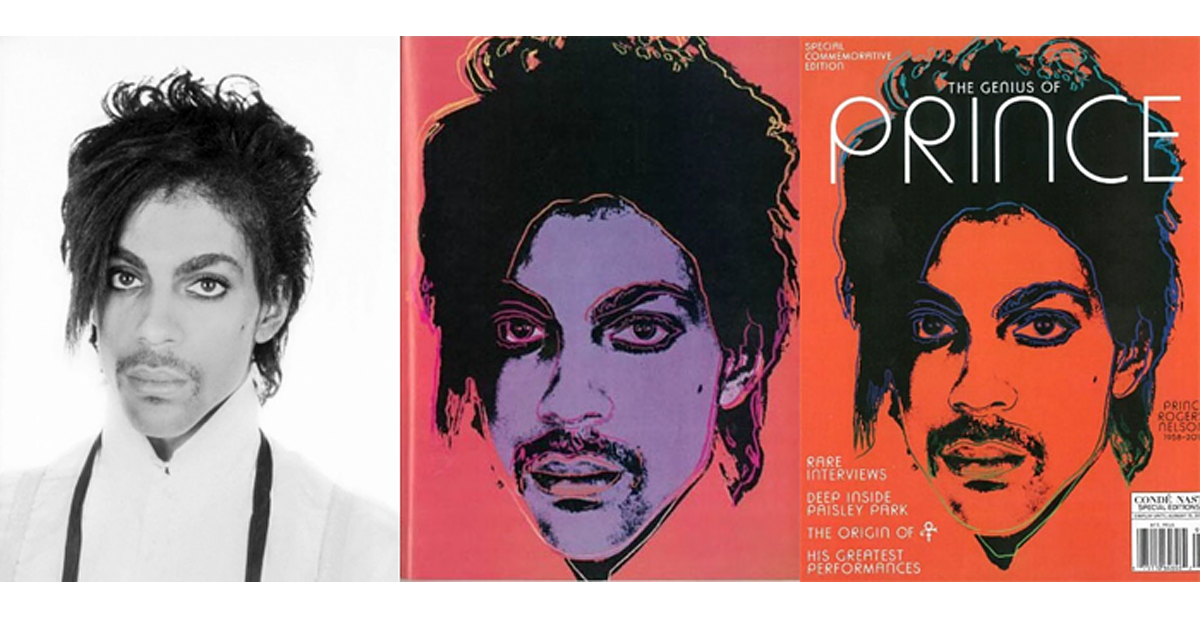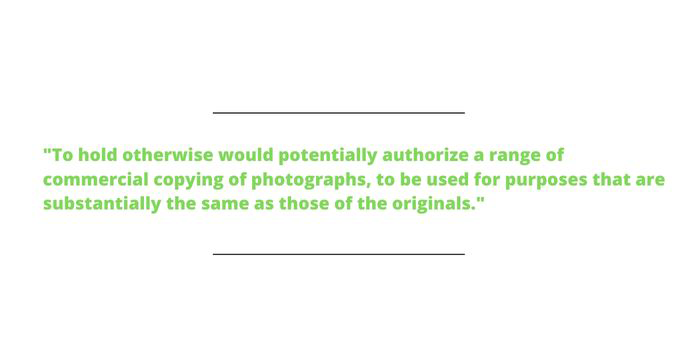A Picture, A Painting, and A Prince: The Supreme Court Addresses The ‘Fair Use’ Doctrine

(Photos above depicted in Goldsmith, 598 U.S. __ (May 18, 2023) at pg. 4, 5 (slip opinion)).
On May 18, the U.S. Supreme Court issued its opinion in the case of Andy Warhol Foundation for the Visual Arts, Inc. v. Goldsmith. The core legal issue regards the Copyright Act’s ‘fair use’ doctrine, and the rule of law from the opinion has potential implications for promotional products businesses.
The Case
In the 1980s, photographer Lynn Goldsmith captured images of many rock-n-roll stars, including Prince. In 1984, Goldsmith licensed one of her photos of Prince to Vanity Fair magazine for “one time” use as an “artist reference.” Vanity Fair wanted to use the photo for the creation of illustrations to be included in an article about Prince and engaged artist Andy Warhol to prepare the illustrations.
Goldsmith was credited for the source and was paid $400. Warhol, however, went on to create additional works using Goldsmith’s photo or the illustrations he created from it.
- In 2016, the Andy Warhol Foundation for the Visual Arts (AWF) licensed one of those works to magazine publisher, Condé Nast, for illustrating another story about Prince.
- AWF received $10,000 for the license. Goldsmith received nothing.
Goldsmith informed AWF that the use of the photo in the Condé Nast magazine infringed her copyright in the photo she provided to Vanity Fair in 1984. In response, AWF sued her, claiming that AWF’s use was “fair use” and thus not an infringement on Goldsmith’s copyright. Goldsmith counterclaimed for infringement.
The Fair Use Doctrine, Briefly
Pursuant to the Copyright Act, the fair use of a copyright work is not an infringement of copyright. What is or is not "fair use," however, depends on application of various factors, four of which are expressly listed in section 107 of the Copyright Act: “(1) the purpose and character of the use, including whether such use is of a commercial nature or is for nonprofit educational purposes; (2) the nature of the copyrighted work; (3) the amount and substantiality of the portion used in relation to the copyrighted work as a whole; and (4) the effect of the use upon the potential market for or value of the copyrighted work.”
Before The Supreme Court
Initially in Goldsmith, the federal district court in New York ruled in favor of AWF. The Court of Appeals for the Second Circuit reversed, finding that all factors of the fair use doctrine favored Goldsmith. AWF petitioned the matter to the U.S. Supreme Court.
AWF focused primarily on the first factor of fair use doctrine, being “the purpose and character of the use.” It contended that the purpose and character of its use of Goldsmith’s photograph weighed in favor of fair use because Warhol’s silkscreen image of the photograph has a new meaning or message than the original photograph created by Goldsmith.
- AWF claimed that its use was “transformative” and thus protected fair use.
Ultimately, the question before the Supreme Court was whether the fair use factor – “the purpose and character of the use, including whether such use is of a commercial nature or is for nonprofit educational purposes,” – weighed in favor of AWF’s later commercial licensing.

The Court’s Findings
The Supreme Court ruled that AWF’s use of Goldsmith’s photograph was not fair use, finding that the use did not satisfy the first factor of the fair use doctrine. The Court noted that fair use, under section 107(1) of the Copyright Act, does not protect all use of a copyrighted work that might add some new expression, meaning, or message. Otherwise, “transformative use” would, according to the Court, swallow the copyright owner’s exclusive right to prepare derivative works from an original.
As the Supreme Court noted, “To hold otherwise would potentially authorize a range of commercial copying of photographs, to be used for purposes that are substantially the same as those of the originals. As long as the user somehow portrays the subject of the photograph differently, he could make modest alterations to the original, sell it to an outlet to accompany a story about the subject, and claim transformative use.
“Many photographs will be open to various interpretations. A subject as open to interpretation as the human face, for example, reasonably can be perceived as conveying several possible meanings. The application of an artist’s characteristic style to bring out a particular meaning that was available in the photograph is less likely to constitute a ‘further purpose’ as Campbell [v. Acuff-Rose Music, Inc., 510 U.S. 569 (1994)] used the term.”
Lessons For Promo
Fair use laws remain extremely gray, and companies incorporating copyrighted assets into their work should be aware that the case-by-case and context-sensitive evaluation lends itself to much subjective speculation about how a court of law, i.e., a judge or a panel of judges, may apply an objective analysis in determining whether a use of a copyrighted work is fair and thus non-infringing.
The Supreme Court’s opinion on Goldsmith adds context to and consideration for the first factor of the fair use doctrine contained in the Copyright Act. While Goldsmith addressed specifically copyrights in a photo, the analysis may also apply to other works or materials for which copyright protection exists. In addition, the holding could have a significant impact on the copyrights of artists, musicians, singers, photographers, and others whose works are used – fairly or unfairly – with or through artificial intelligence or other technology means to create what are (or are arguably) derivative works that infringe on the creator’s rights.
In its opinion, the Supreme Court noted, “Not every instance will be clear cut, however. Whether a use shares the purpose or character of an original work, or instead has a further purpose or different character, is a matter of degree. Most copying has some further purpose, in the sense that copying is socially useful ex post. Many secondary works add something new. That alone does not render such uses fair. Rather, the first factor (which is just one factor in a larger analysis) asks ‘whether and to what extent’ the use at issue has a purpose or character different from the original. The larger the difference, the more likely the first factor weighs in favor of fair use. The smaller the difference, the less likely.”
Cory Halliburton is an attorney with Freeman Law and serves as general counsel for PPAI.

